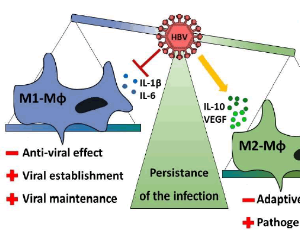Loading
Archives of Gastroenterology Research
ISSN: 2692-5427
Most Read Articles
Alcoholic Liver Disease and the co-triggering Role of MEOS with Its CYP 2E1 Catalytic Cycle and ROS
Rolf Teschke , Manuela G. Neuman , Suthat Liangpunsakul , Helmut-Karl Seitz
Until the early sixties, the concept prevailed that alcoholic liver disease (ALD), also termed alcohol-related liver disease (ARLD), results from malnutrition commonly observed among individuals consuming chronically high amounts of alcohol rather than being causally related to the use of alcoholic beverages. However, the malnutrition concept became a matter of debate because of the clinical observation that humans, even on a normal diet and without signs of underweight or malnutrition
Arch Gastroenterol Res, 2021, Volume 2, Issue 1, p9-25 | DOI: 10.33696/Gastroenterology.2.022
Gastric Cancer: A Brief Review, from Risk Factors to Treatment
Beatriz Rocha Cuzzuol , Elise Santos Vieira , Glauber Rocha Lima Araújo , Jonathan Santos Apolonio , Lorena Sousa de Carvalho , Ronaldo Teixeira da Silva Junior , Breno Bittencourt de Brito , Fabrício Freire de Melo
Gastric cancer (GC), also known as stomach cancer, is a worldwide health problem. Anatomically, it can occur from the gastroesophageal junction to distal portions of the stomach. Considering both sexes, worldwide, it is the 5th most common neoplasm (5.7%) and the 3rd cause of mortality among malignancies, leading to approximately 782,000 deaths in 2018. The incidence varies geographically but 50% of new cases are diagnosed in developed countries. High incidence is observed in Asia, Latin America, and in the central and eastern parts of Europe. There are several ways to classify GC, but the most used is Lauren’s Classification, which proposes two main histological groups: intestinal and diffuse. This classification is important because there are marked etiological, pathological, and epidemiological differences between the subgroups, guiding the clinical approach for each patient.
Arch Gastroenterol Res, 2020, Volume 1, Issue 2, p34-39 | DOI: 10.33696/Gastroenterology.1.008
Treatment and Drug Resistance to Helicobacter Pylori: A Brief Review
Vinícius Lima de Souza Gonçalves , Jonathan Santos Apolonio , Ronaldo Teixeira da Silva Junior , Maria Luísa Cordeiro Santos , Beatriz Rocha Cuzzuol , Marcel Silva Luz , Fabian Fellipe Bueno Lemos , Hanna Santos Marques , Camilo Santana Silva , Mariana Miranda Sampaio , Bruna Teixeira da Costa , Fabrício Freire de Melo
Helicobacter pylori is a gram-negative, spiral-shaped bacterium that inhabits the gastric environment of 60.3% of the global population. Though most individuals infected with the bacterium remain asymptomatic, it is known that this infection plays a pivotal role in the development of diseases such as chronic gastritis, peptic ulcer, gastric cancer and gastric MALT lymphoma. Hence, eradication of H. pylori is associated with the potential prevention of many gastric and extra gastric diseases, such as gastric cancer.
Arch Gastroenterol Res, 2021, Volume 2, Issue 3, p75-78 | DOI: 10.33696/Gastroenterology.2.031
The Dual Role of Macrophages during Hepatitis B Infection
Suzanne Faure-Dupuy , Julie Lucifora , David Durantel
Hepatitis B virus (HBV) chronically infects more than 250 million individuals worldwide and is responsible for more than 800,000 deaths per year by promoting end-stage liver diseases, among which decompensated cirrhosis and hepatocellular carcinoma (HCC) (WHO, July 2020) are prominent. Studies performed in chimpanzees or in animalversion of HBV (woodchuck HBV: WHBV) highlighted the lack of immune responses against the virus upon primary infection.
Arch Gastroenterol Res, 2020, Volume 1, Issue 4, p89-94 | DOI: 10.33696/Gastroenterology.1.016
Are We Close to Achieving a HBV Cure? Risk for Hepatocellular Carcinoma Persists Despite Long-term HBV Suppression: An Update on Our Experience
Tina Boortalary , Brianna J Shinn , Robert M Coben , Mitchell I Conn , Jorge Prieto , Howard Kroop , Anthony J DiMarino , Hie-Won Hann
Since the discovery of the hepatitis B virus (HBV) by Blumberg et al., great progress has been made in understanding the pathogenesis of the virus and its role in hepatocellular carcinoma (HCC). It is estimated that hepatitis B is responsible for about 50% of the HCC cases worldwide. Because of geographic variations in HBV incidence, the burden of HBV-related HCC (HBV-HCC) is highest in endemic areas such as Asian-Pacific and sub- Saharan Africa and lowest in the United States and the West.
Arch Gastroenterol Res, 2020, Volume 1, Issue 4, p105-110 | DOI: 10.33696/Gastroenterology.1.018
Conversion Surgery for Hepatocellular Carcinoma Treated with Lenvatinb
Nobutaka Sato , Toru Beppu , Eri Oda , Kensuke Yamamura , Shinichi Akahoshi
Multidisciplinary treatment is widely applied for advanced hepatocellular carcinoma (HCC). Systemic therapy is recommended and can provide a modest prognosis for HCC in Barcelona Clinic Liver Cancer staging C. Lenvatinib is a newly developed multityrosine kinase inhibitor and has become a more preferred targeted drug than sorafenib to achieve conversion surgery due to its higher tumor necrosis effect.
Arch Gastroenterol Res, 2020, Volume 1, Issue 4, p117-123 | DOI: 10.33696/Gastroenterology.1.020
About Scientific Archives
Scientific Archives is a global publisher initiated with the mission of ensuring equal opportunity for accessing science to research community all over the world. Spreading research findings with great relevance to all channels without any barrier is our goal. We want to overcome the challenges of Open Access with ensured quality and transparency.
